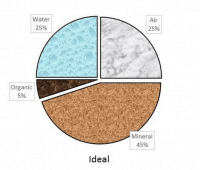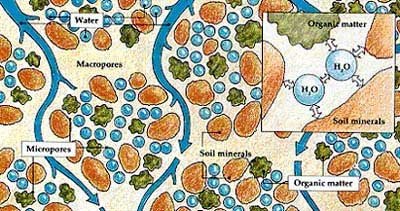How to Fix Your Soil After a Flood
How to Rehabilitate Water-Logged Soil After a Flood
When soils, especially heavier loams or clays, are sitting in water for too long, there are a number of very bad things that happen: loss of aeration, breakdown of soil structure, compaction, loss of beneficial soil microbes, and/or root rot or other diseases. Whether you are growing grass, garden plants, trees, or farm crops, it is vital to rehabilitate the soil if you want healthy plant growth in the future. The first step in rehabilitating is to bring oxygen into the soil and to regenerate the beneficial soil microbial life.
Soil Basics
 Topsoil is a wonderfully structured growing medium for plants. It is something that is created by nature out of rock, over eons. This is done mostly through the interaction of beneficial micro-life acting on very small pieces of sand, silt, or clay (which is microscopic in size). The living organisms group mineral particles into tiny micro-aggregates. These are held together by both organic substances and the attractive forces of charged clay particles. Inside and in between these aggregates is space for air, water, microbes, and fine roots.
Topsoil is a wonderfully structured growing medium for plants. It is something that is created by nature out of rock, over eons. This is done mostly through the interaction of beneficial micro-life acting on very small pieces of sand, silt, or clay (which is microscopic in size). The living organisms group mineral particles into tiny micro-aggregates. These are held together by both organic substances and the attractive forces of charged clay particles. Inside and in between these aggregates is space for air, water, microbes, and fine roots.
An ideal topsoil would contain 25% air space, 25% water, 45% minerals, and 5% organic matter, including living organisms. The amount of air space in the soil is critical because most of the bio-life in the soil depends on air for survival. Plant roots need air as well.
The soil structure, or matrix, once formed is fairly stable, especially if it is high in organic matter–you might liken the structure to a dampened sponge. It holds water but there is plenty of pore space for air. But under a microscope it looks more like the image below.
When soils are submerged in water for too long the oxygen is pushed out of the soil, which leads to root rot and the death of beneficial soil microbes and plant life. Additionally, the excess water degrades and breaks down the soil aggregates, releasing clay into the open areas, collapsing the structure and ruining the aeration. (Imagine a cathedral collapsing into a pile of dust and stones and you get a good picture of what it’s like.)
As this broken-down soil dries out, it tightens up into more of a heavy, claylike soil that is tightly bonded due to microscopic clay particles holding on to each other.
The Solution
The only way to rehabilitate soil that has lost its structure, aeration, and bio-matter due to flooding or water-logging is to break up the clay bonds and reintroduce air into the soil, in order to help roots to breathe and to regenerate the bio-matter that is capable of rebuilding soil structure. The simplest way to do this is by applying a soil penetrant that can work into the clay, one that can also break some of the clay bonds and release oxygen throughout the root zone and below. Our product of choice is Aerify PLUS. It not only provides liquid aeration to damaged soil, but it also puts readily available organic matter (humic acid and kelp/seaweed) that acts as bio-stimulants to plants and soil microbes, while also providing food for beneficial soil restructuring microbes.
If your lawn or garden has suffered from flooding or being water-logged, be sure to use Aerify PLUS today to get your soil back in shape!